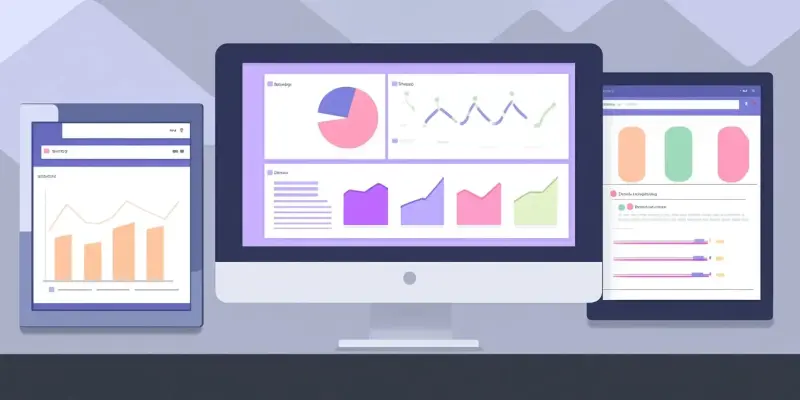Retailers across the UK are grappling with significant connectivity issues that threaten their operational efficiency and customer experience. According to a survey conducted by Ericsson, which targeted 500 technology decision-makers within medium and large retail businesses, networking and IT challenges overshadow many other operational concerns like budget constraints and staffing issues.
Connectivity Challenges Impacting Retail
Networking and IT Woes
A substantial portion of retailers (48%) find networking and IT the most frustrating aspects when implementing new technology-based services, outstripping issues such as budget constraints and staffing challenges. These connectivity problems disrupt the goal of maintaining consistent and resilient retail branch networks. When retailers seek to integrate advanced technology solutions to improve their operations, these connectivity problems can quickly become insurmountable barriers. These frustrations are compounded by the complexities of managing multiple technologies and service providers, posing a significant operational burden.
Fixed Broadband Limitations
Fixed broadband connectivity, plagued by the physical fragility of fiber cables and frequent network outages, has become a significant barrier. For 70% of surveyed retailers, these fixed broadband issues are preventing the creation of standardized and reliable in-store experiences across various branch locations. The conventional infrastructure of fiber optics, despite its high-speed capacity, fails to deliver the reliability required by modern retail operations. The susceptibility of fiber cables to physical damage and degradation over time exacerbates the problem, causing prolonged downtimes that directly affect store performance.
Financial and Experience Repercussions
Revenue Losses Tied to Connectivity
Connectivity problems translate into tangible revenue losses for retailers, with 38% reporting revenue losses due to connectivity issues in remote and poorly connected locations. This inconsistency also detrimentally affects customer experiences, which vary significantly from one branch to another, complicating efforts to maintain service standards. As retailers strive to offer a seamless and unified shopping experience across multiple locations, the disparity in connectivity infrastructure becomes a profound obstacle. These interruptions not only affect sales transactions but also undermine customer loyalty and satisfaction, leading to long-term revenue declines.
Necessity for Scaled-Down Services
Due to connectivity constraints, over a third (37%) of large retailers are forced to offer scaled-down services at remote locations. This is a clear indicator of the direct relationship between reliable connectivity and the quality of services provided at retail stores. Scaled-down services often mean limited product availability, reduced in-store technologies, and fewer customer engagement initiatives. As a result, remote branches struggle to compete with more connected locations, widening the performance gap and discouraging customers from frequenting those stores. Retailers are compelled to devise alternative strategies that can mitigate the impact of these connectivity issues.
The Rising Dependence on Connectivity Solutions
Enhancement of Customer Experience
Despite the connectivity hurdles, retailers are increasingly relying on advanced networking solutions to enhance the customer experience.In-store Wi-Fi is widespread, with 72% of retailers using it for personalized marketing, along with other advanced technologies like IoT, which 60% of retailers utilize for real-time digital signage. The integration of such technologies aims to create a more interactive and engaging shopping environment, fostering greater customer loyalty. Personalized marketing enabled by robust Wi-Fi connectivity allows retailers to target promotions based on individual preferences, improving conversion rates and overall shopping satisfaction.
Integration of AI and Machine Learning
AI and machine learning are also being integrated into retail operations. For instance, 55% of retailers use these technologies for dynamic pricing, enhancing the adaptability and responsiveness of their pricing strategies based on real-time data and customer behavior. Dynamic pricing models ensure that retailers can remain competitive while maximizing profit margins. Furthermore, AI-driven analytics provide retailers with deep insights into customer preferences and emerging trends, enabling them to make informed decisions that align with consumer demands.Machine learning algorithms enhance inventory management, reducing instances of overstocking and stockouts, thus optimizing the supply chain.
Cellular Networks as a Viable Solution
T-Mobile’s Innovative Approach
To address these connectivity demands, T-Mobile leveraged cellular broadband networks combined with Ericsson Cradlepoint cellular adaptors for backup support. This solution has ensured 100% uptime for critical applications and IoT devices across its over 5,000 stores, demonstrating the potential of cellular networks to provide reliable connectivity. Cellular networks offer several advantages over traditional wired connections, including greater flexibility, scalability, and reduced physical vulnerabilities. The implementation of cellular broadband solutions by T-Mobile highlights a strategic shift towards more resilient and adaptable network infrastructures, crucial for maintaining uninterrupted operations.
Enhanced Security through Connectivity
Investments in security measures like CCTV, costing UK retailers billions annually, hinge on robust connectivity to be effective.Many retailers are turning to IoT tools for asset tagging and inventory tracking, which require a dependable connectivity infrastructure to share real-time data, thereby bolstering security and reducing losses from theft. Advanced security technologies necessitate continuous and stable connectivity to function optimally, detecting and responding to potential threats in real-time. Retailers investing in IoT-enabled surveillance and tracking systems gain enhanced visibility and control over their assets, reducing the incidence of theft and improving overall operational security.
Summary and Conclusion
Retailers across the United Kingdom are contending with major connectivity issues that put their operational efficiency and the overall customer experience at risk. This concern isn’t just a minor annoyance; it’s a significant challenge that could impact the bottom line for many businesses. According to a survey by Ericsson, which polled 500 technology decision-makers from medium and large retail businesses, there are recurring themes in the struggles they face.The survey revealed that networking and IT challenges are paramount, often overshadowing other important operational concerns like budget constraints and staffing issues. For many of these businesses, the ability to maintain a reliable network goes hand-in-hand with their ability to serve customers efficiently and maintain smooth internal operations.As e-commerce continues to grow and consumer expectations for speedy, seamless service rise, the pressure mounts on retailers to address these networking hurdles. Ultimately, an investment in robust IT solutions isn’t just about technology; it’s about securing a company’s future in an increasingly digital marketplace.

